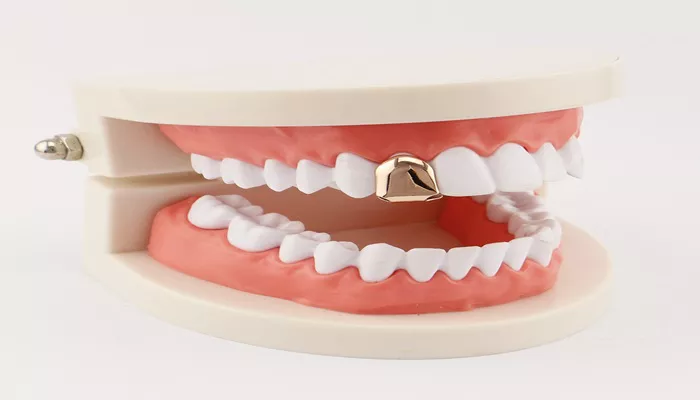Braces are an essential tool in orthodontics, designed to straighten teeth and improve dental alignment. They consist of several components, including brackets, wires, and elastic chains. While braces are generally durable, issues can arise, such as a broken braces chain. This situation can cause discomfort and may hinder the effectiveness of your treatment. In this article, we will explore what a braces chain is, the reasons it may break, and the steps you should take if you find yourself in this situation.
What Is A Braces Chain?
A braces chain, also known as an elastic chain or power chain, is a series of interconnected elastic links used in orthodontic treatment. These chains are used to connect brackets on the same arch or to close gaps between teeth. They apply continuous pressure to the teeth, helping them move into the desired position over time.
Types of Braces Chains
Braces chains come in various types, including:
Elastic Chains: Made of rubber-like material, these are the most common type used in braces. They can be clear, colored, or patterned, allowing patients to choose a style that suits their preferences.
Metal Chains: Less common, metal chains are sometimes used for specific orthodontic applications. They are more durable but less aesthetically pleasing than elastic chains.
Reasons for A Broken Braces Chain
Common Causes of Breakage
Several factors can lead to a broken braces chain, including:
Excessive Force: Chewing hard foods or using teeth to open packages can place undue stress on the braces, causing the chain to snap.
Wear and Tear: Over time, the elastic material can degrade, leading to breakage. This is especially common if the chains are not replaced regularly.
Improper Placement: If the chain was not installed correctly by the orthodontist, it may be more prone to breaking.
Accidental Trauma: Sports injuries or accidents can lead to damage to the braces, including the chain.
What to Do If Your Braces Chain Is Broken
Step 1: Assess the Situation
When you discover that your braces chain is broken, the first step is to assess the situation. Check if the chain is completely detached or if it is still partially connected. Understanding the extent of the breakage will help you determine your next steps.
Step 2: Avoid Panic
It’s essential to remain calm. A broken braces chain is a common occurrence and can usually be resolved without significant issues. Panicking may lead to unnecessary stress and could make the situation feel worse than it is.
Step 3: Avoid Certain Foods
While you wait to address the broken chain, it’s wise to avoid certain foods that could exacerbate the problem. Steer clear of:
Hard Foods: Foods like nuts, hard candies, and raw vegetables can put additional stress on your braces.
Sticky Foods: Chewy candies, caramel, and gum can get stuck in your braces and may cause further damage.
Crunchy Foods: Chips and popcorn can also pose a risk, as they may dislodge brackets or worsen the condition of the chain.
Step 4: Contact Your Orthodontist
The next step is to contact your orthodontist as soon as possible. Explain the situation and ask for guidance. Most orthodontic offices have protocols for handling broken braces components, and they can provide specific instructions based on your situation.
Step 5: Schedule an Appointment
If your orthodontist recommends a visit, schedule an appointment as soon as possible. Depending on the severity of the break and your treatment plan, they may need to replace the broken chain or make adjustments to your braces.
Step 6: Temporary Solutions
While waiting for your appointment, you can take some temporary measures to manage the situation:
Use Orthodontic Wax: If the broken chain is causing irritation to your gums or cheeks, apply orthodontic wax to the affected area. This wax can create a barrier and help alleviate discomfort.
Take Over-the-Counter Pain Relief: If you experience pain or discomfort due to the broken chain, consider taking over-the-counter pain relief medication, such as ibuprofen or acetaminophen. Always follow the recommended dosage instructions.
Maintain Oral Hygiene: Continue to brush and floss your teeth carefully, avoiding the area where the chain is broken.
Keeping your mouth clean is essential to prevent any complications, such as infections.
Preventing Future Breakages
Tips for Care and Maintenance
After addressing a broken braces chain, it’s essential to take steps to prevent future occurrences. Here are some tips to help you maintain your braces effectively:
Follow Dietary Guidelines: Stick to soft foods and avoid hard, sticky, or crunchy items. Your orthodontist may provide a list of foods to avoid during treatment.
Practice Good Oral Hygiene: Regular brushing and flossing will help keep your braces clean and reduce the risk of issues that could lead to breakage.
Attend Regular Appointments: Keep up with your scheduled orthodontic visits. Regular adjustments and checks will ensure that your braces are functioning correctly and that any potential issues are addressed promptly.
Use Protective Gear: If you participate in contact sports, consider wearing a mouthguard to protect your braces from trauma.
Be Mindful of Habits: Avoid using your teeth as tools to open packages or bite down on hard objects, as these habits can increase the risk of breakage.
Conclusion
A broken braces chain can be a frustrating experience, but it is a common issue that can be resolved with the right approach.
By understanding what a braces chain is, the reasons it may break, and the steps to take if it happens, you can navigate this situation with confidence. Remember to remain calm, contact your orthodontist promptly, and follow their guidance for the best outcome.
Taking proactive measures to care for your braces and being mindful of potential risks will help ensure a smoother orthodontic journey. With proper attention and care, you can achieve the beautiful, straight smile you desire while minimizing the likelihood of future issues with your braces. If you ever encounter a broken braces chain, know that you have the tools and knowledge to handle it effectively.
Related topics:

